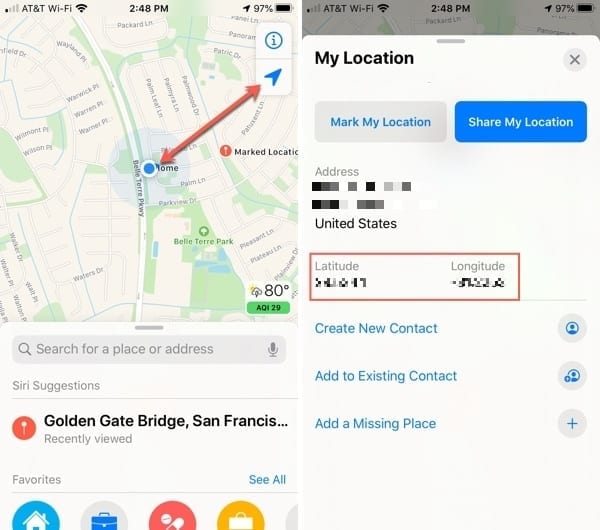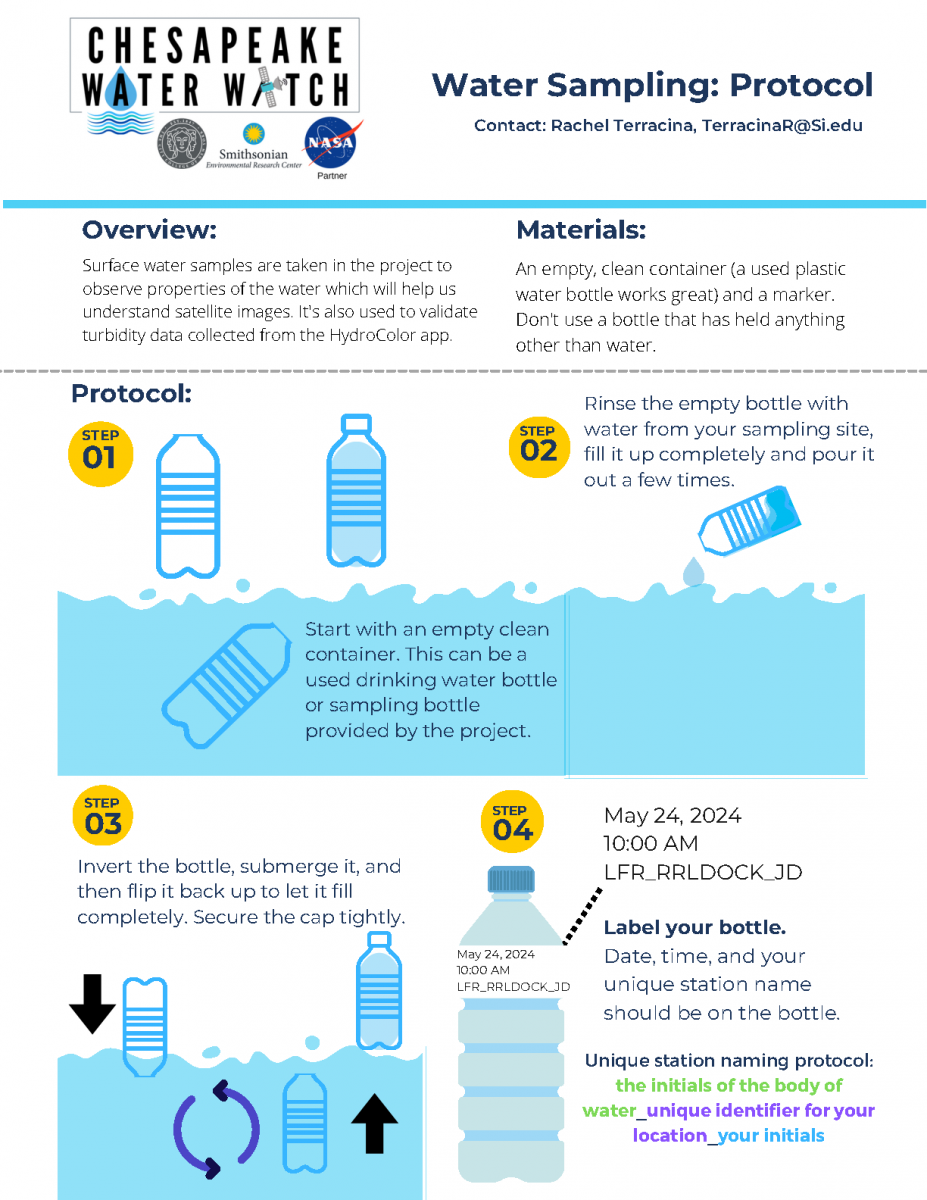Chesapeake Water Watch: Satellites & Samples
Join us for a special day of water quality data collection!
Event Details
Attention outdoor enthusiasts and volunteer scientists! We need your help to get as many water samples from the Chesapeake Bay as possible on Thursday, September 26th.
There will be two high-resolution satellites, Landsat-9 and Sentinel-2a, gracing the skies above the Chesapeake Bay. We can use your water samples to improve the water quality monitoring algorithms for not one but two satellites.
Here's how you can participate:
- Collect a water sample from the Bay or from any tidal river that flows into the Bay
- Fill out a quick data sheet
- Drop off your sample at a nearby collection hub
Your small act can make a big impact in monitoring our coastal ecosystems. Don't miss out on the fun!
Time
The drop-off window varies by collection hub, so be sure to check where you would like to drop off your sample.
Samples must be dropped off at the collection hubs by the end time indicated to ensure we have enough time to transport and process the samples.
What You'll Need
An empty plastic water bottle
A smartphone/device to record GPS coordinates
Event data sheet (or piece of paper to record data)
A rubber band (or something similar) to attach datasheet to sample bottle
Collection Hubs
*Check Collection Hub Details Before Dropping Off Your Sample *
Please note: Marshy Point Nature Center is a self-testing location. Volunteers bringing samples to that location will need to use the on-site machines to run their own analysis and send their data to Ray at TerracinaR@si.edu
Smithsonian Environmental Research Center
Day-of contact: Tara Sill (SillT@si.edu)
647 Contees Wharf Road,
Edgewater, MD 21037
Drop-off window: 8AM - 3PM
Press red button above cooler to notify of drop-off.
Advocates for Herring Bay
Day-of contact: Tara Sill (sillt@si.edu)
404 Arundel Road,
Tracys Landing, MD, 20779
Drop-off window: 9AM - 3PM
Cooler will be on front porch. Knock or ring doorbell to notify of drop-off.
Anne Arundel Community College
Day-of contact: Tammy Domanski (tldomanski@aacc.edu)
101 College Parkway,
Arnold, MD 21012
(443) 994-9236
Drop-off window: 9AM - 3PM
Scan QR code to notify drop-off.
Marshy Point Nature Center
*SELF TESTING LOCATION*
Day-of contact: Ray Terracina (TerracinaR@si.edu)
7130 Marshy Point Rd,
Middle River, MD 21220
Drop-off window: 9AM - 5PM
Enter the classroom on the left, walk to the back corner with cabinets to find the CWW machines and protocol binder. Follow step by step instructions to test your sample. Send a photo of completed data sheet to Ray at TerracinaR@si.edu or upload results directly into Fieldscope.
Anne Arundel County Public Library- Edgewater
Day-of contact: Ray Terracina (TerracinaR@si.edu)
25 Stepneys Lane
Edgewater, MD 21037
Drop-off window: 10AM - 4PM
Cooler will be outside, near the front door. Scan QR code to notify drop-off.
Kent County Public Library- Chestertown Branch
Day-of contact: Ray Terracina (TerracinaR@si.edu)
408 High Street
Chestertown, MD 21620
Drop-off window: 11:30AM - 3PM
Walk into the library, head towards the circulation desk. Look for the CWW team member with a cooler near the fiction section.
The Ryan Resilience Lab
Day-of contact: Ray Terracina (TerracinaR@si.edu)
4610 Colley Ave.
Norfolk, VA, 23508
Drop-off window: 9AM - 3PM
* Cooler will be near the front door. Scan QR code to notify drop-off.
How To
CWW Virtual Training: Collecting a Water Sample
For drop-off locations that are not at SERC, you may stop the video at 1:44.
Get GPS Coordinates on Google Maps and Apple Maps
This is very important! Accurate GPS points are required for successful data analysis. No GPS location = We can’t use the data!
Google Maps
Android
- On your Android phone or tablet, open the Google Maps app
.
- Touch and hold an area of the map that isn’t labeled to drop a red pin.
- In the search box, you can find the coordinates.
iPhone or iPad
- On your iPhone or iPad, open the Google Maps app
.
- Touch and hold an area of the map that isn’t labeled to drop a red pin.
- At the bottom, tap Dropped pin to find the coordinates.
Apple Maps
Get GPS Coordinates in Maps on iPhone and iPad
Open Maps on your iPhone or iPad and then follow these steps to get your current location’s GPS coordinates.
- Tap the current location button on the top right.
- When the blue circle for your spot appears on the map, tap it.
- Swipe up from the bottom to view full details for your location and you’ll see the Latitude and Longitude.

Credit: AppleToolBox
Not sure where to go?
Collection Tips
- Your safety is our #1 priority. If weather does not permit for collection, that’s okay! We will have more events and ways to get involved in the future.
- Be sure to write clearly on your data sheet! We need to be able to match up the water sample to the data on your datasheet. Without both, we won’t be able to use your sample!
- Try to take a water sample as far from the shore as possible. If it’s too close to shore, wave action may contaminate the sample and not give us an accurate representation of the overall body of water.
- Transport your water sample in a cooler or thick bag. Some of the measurements we get from water samples can be affected by heat and light.


